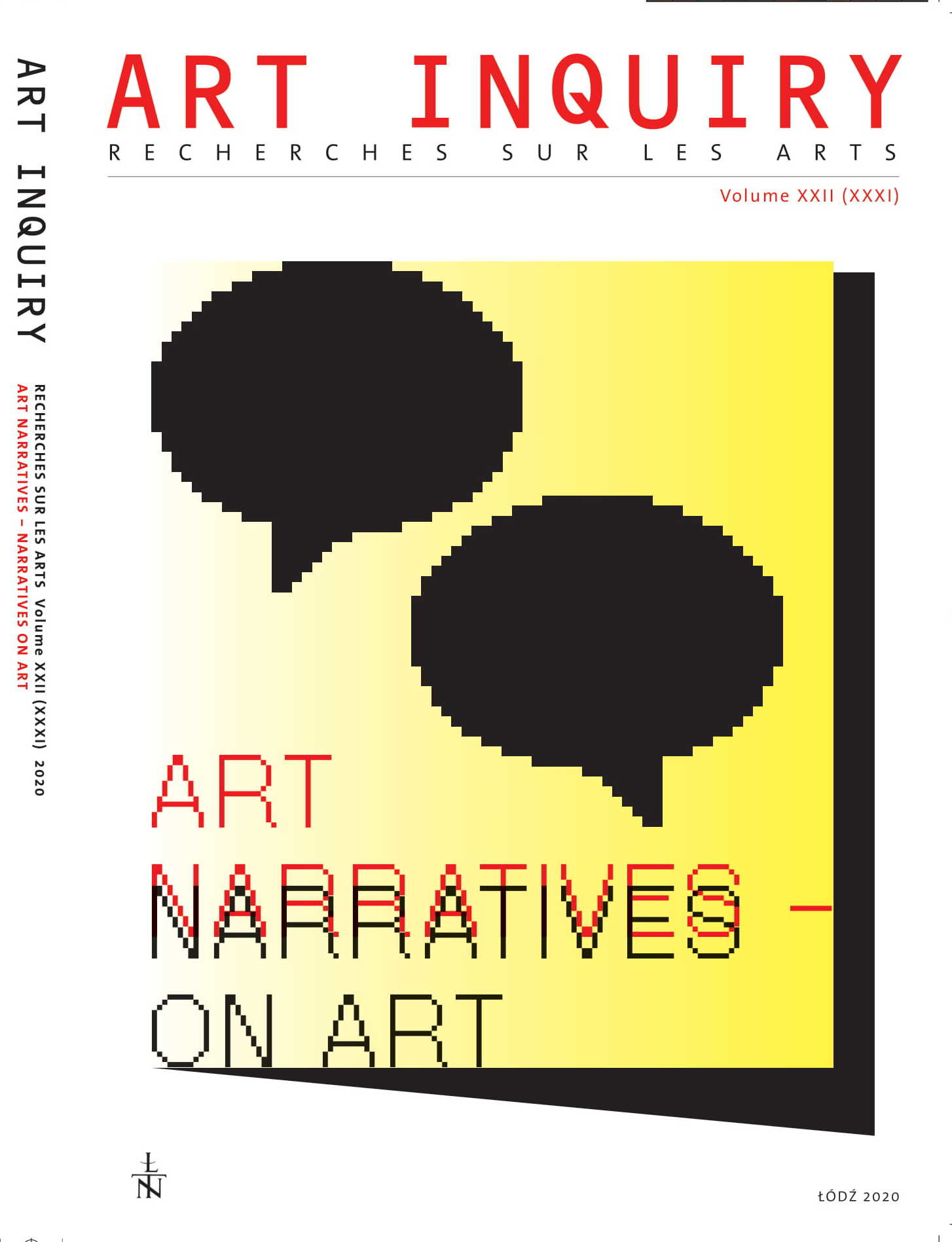Narratives - stories of stones and humans
DOI:
https://doi.org/10.26485/AI/2020/22/2Keywords:
narrative, metamorphosis, sense-making, sequence, visual artsAbstract
When considering the notion of narrative in the visual arts, a rather important problem is encountered: how can an isolated whole like a canvas, an installation or a sculpture be analyzed in terms of narrative and, hence, in terms of a sequence?
The article aims to show that the problem of a sequence versus an isolated item in the visual arts can be solved through the mode of implicit anticipation of the future and implicit recognition of the past. That is to say, although it is difficult to consider a sequence structure concerning an isolated item like a canvas or an installation, it is possible to think of it as embedded in a more abstract sequence, wherein the work of art is a ‘moment’ between the past and the future implicitly present in it.
I would also like to argue that the most important part of narrative is not so much the technical aspect of its sequence-bound structure, but rather that which is implicit to the definition of narrative: that, above all, narrative is a symptom of a compulsion to make sense of the world.
References
Bal Mieke, Bal Maria Gertrudis, Quoting Caravaggio: Contemporary Art Preposterous History, Chi¬cago, London 1999: The University of Chicago Press.
Cobley Paul (2001, 2003), Narrative, Paris, New York: Routledge.
Derrida Jacques (1993), Memoirs of The Blind. The Self-Portrait and Other Ruins, transl. P.-A. Brault, M. Naas, Chicago: The University of Chicago Press.
Jeanneret Michel (1997), Perpetuum mobile. Metamorphoses des corps et des oeuvres de Vinci a Montaigne, Paris: Macula.
Lyotard Jean-Francois (1984 [1979], reprint 1997), Report on Knowledge, translated by Geoff Bennington and Brian Massumi, Minneapolis: University of Minnesota Press.
Rembowska- Płuciennik Magdalena (2012), Poetyka intersubiektywności: Kognitywistyczna teoria narracji a proza XX wieku, Toruń: Wydawnictwo Naukowe Uniwersytetu Mikołaja Kopernika.
Schwarz Daniel R. (1994), “Thirteen Ways of Looking at a Blackbird”. Wallace Stevens’s Cubist Narrative in: Narrative and Culture, ed. by Janice Carlisle, Daniel L Schwarz, Athens and Lon¬don: The University of Georgia Press.
Taylor Mark C., Esa Saarinen (1994, 1995, 1996), Imagologies: Media Philosophy, USA and Canada: Routledge.
John Donne, An Anatomy of the World in: https://www.poetryfoundation.org/poems/44092/an-anatomy-of-the-world, accessed 15.07.2020



